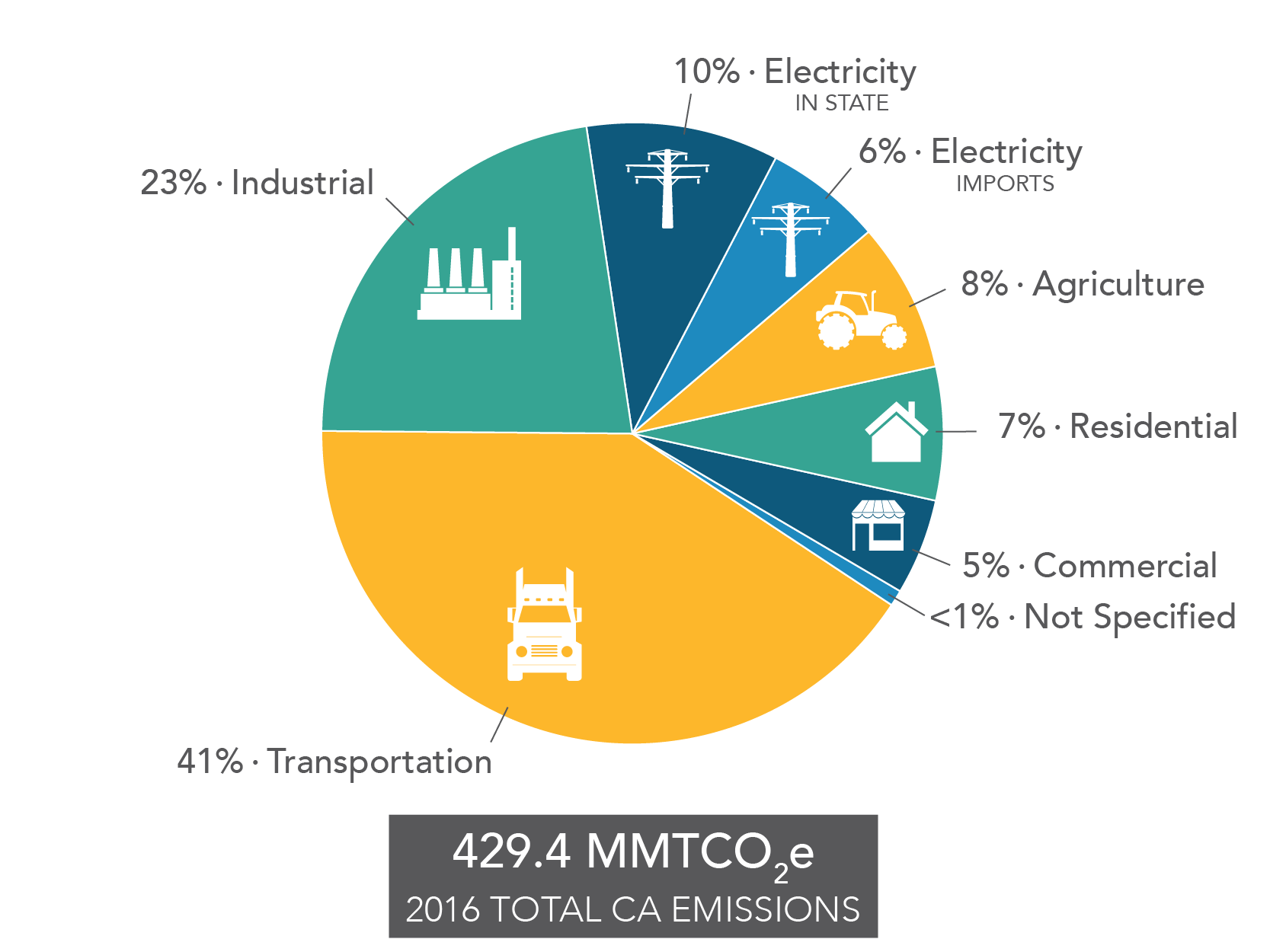According to information discussed in the Oct. 13, 2019 edition of the Maddy Report (the Maddy Report is a T.V. program broadcast on the local ABC affiliate in Fresno), about one percent of the world’s greenhouse gas (GHG) emissions contribution comes from California. Now that may not seem like a lot, but, astonishingly, when considered in the context of the annual GHG-emissions releases of the 190 or so nations signing onto the Paris Climate Accord in 2015, on a volumetric basis the Golden State occupies a spot about 20 down from the top in world-country rankings. And that says a lot considering California isn’t even a country. So, what is being done in the Golden State in terms of GHG emissions reduction is probably seen by the rest of the world as being a fairly big deal.

The less-than-good-news is that for the past few years after a steady reduction in GHG-emissions released, transportation-generated GHG emissions have been rising, this while energy, industrial, agricultural, residential sectors in this regard have either experienced improvement or their outputs have remained flat, meaning no or very little change one way or the other.
So, the rise in transportation-based GHGs suggests that improvement progress in this sector is lacking. In other words the state could and should be doing better which means more in the way of reducing said sector emissions must be done especially if the state is to meet its 2030 GHG emissions-reduction goal of 40 percent below the level emitted in 1990.
In 2017, of all in-state GHG emissions released, transportation produced the lion’s share – about 41 percent, according to information in Next 10’s “California Will Hit Climate Targets More Than 100 Years Too Late If Current Pace of Emissions Reductions Holds” Oct. 8, 2019 press release. Nearly 30 percent of this comes from private passenger vehicles.
Moreover, Next 10 also in the release in question disclosed that by 2018’s fourth quarter (Oct. 1 through Dec. 31), 57.3 percent of new motor vehicle sales in state were light trucks, minivans and sport utility vehicles or SUVs. In-state sales of hybrid and electric vehicles last year, meanwhile, totaled right around 4 percent. (The entire Next 10 Oct. 8, 2019 press release in question can be read here).
So, if the goal in 2030 is to reduce state GHG emissions output to 40 percent below what it was in 1990, how to get there is the question.
One thing is certain: Much of the improvement will have to come from transportation. By 2030, presumed is half the state’s electric generation will be through renewable means – solar, wind, geothermal and hydroelectric, with in-state generation fully from renewable sources by 2045. Meanwhile, the state’s one remaining nuclear power plant is due to be decommissioned and off-line by year 2025.
Per-capita carbon footprints will, likewise, need to be significantly lowered. And the state must do a much better job than what is currently the case when it comes to reducing waste. Like transportation, GHG output connected with landfill activity is also wrong-headed: Landfill gases are on the rise.
The state can and must meet its GHG targets but it has its work cut out. Maybe the question that should be asked: Is meeting the 2030 and 2050 goals important enough to enough Californians or will the outcomes be more along the lines of what trends are currently?
That is the question.
Image above: California Environmental Protection Agency Air Resources Board
This post was last revised on Dec. 27, 2020 @ 7:16 a.m. Pacific Standard Time.
Published by Alan Kandel
